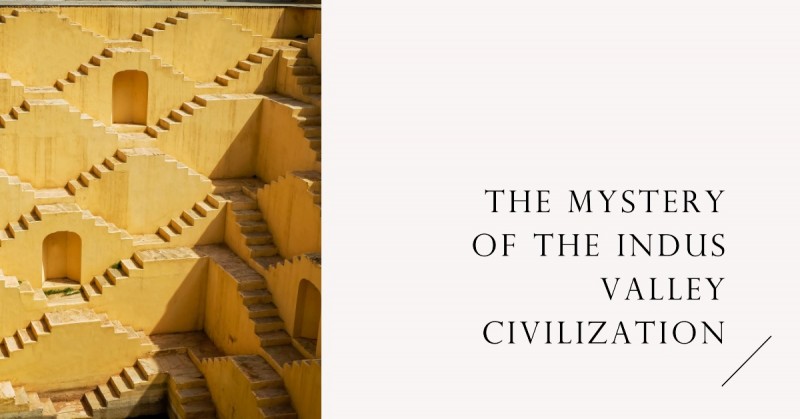
The Indus Valley Civilization, also known as the Harappan Civilization, is one of the oldest urban civilizations in the world. Flourishing around 2600 to 1900 BCE, it spanned across parts of what is now modern-day India and Pakistan. Despite its significance, the Indus Valley Civilization remains shrouded in mystery, with many aspects of its culture, writing system, and ultimate decline still being actively researched and debated by archaeologists and historians. In this article, we will delve into the enigmatic features of this ancient civilization and explore the unanswered questions that continue to intrigue scholars.
The Indus Valley Civilization emerged in the fertile plains surrounding the Indus River, offering a remarkable insight into the development of complex societies during the Bronze Age. Its cities, such as Harappa and Mohenjo-daro, showcased advanced urban planning, sophisticated drainage systems, and evidence of a thriving culture. Despite its achievements, several aspects of this civilization remain a mystery.
Discovery and Excavation
The discovery of the Indus Valley Civilization occurred in the 1920s when archaeologists began unearthing the ruins of Harappa and Mohenjo-daro. These excavations revealed an organized urban society with well-laid-out streets, multi-story buildings, and an intricate water suapply and drainage system. The artifacts found, including pottery, jewelry, and figurines, provided insights into the civilization's craftsmanship and artistic abilities.
Urban Planning and Architecture
The Indus Valley cities exhibited impressive urban planning. Streets were laid out in a grid-like pattern, with houses constructed using standardized bricks. The Great Bath, an elaborate water tank in Mohenjo-daro, suggested the importance of ritual bathing and possibly a sophisticated understanding of hygiene. The cities' architectural design and infrastructure were ahead of their time.
Writing System: The Indus Script
One of the greatest enigmas surrounding the Indus Valley Civilization is its undeciphered writing system, known as the Indus Script. Despite numerous attempts, scholars have not been able to fully decipher the script, hindering a comprehensive understanding of their written language, literature, and historical records. The Indus Script remains an intriguing puzzle waiting to be solved.
Trade and Economy
The Indus Valley Civilization engaged in long-distance trade, evident from the discovery of artifacts such as seals and pottery found in Mesopotamia and other regions. The presence of standardized weights and measures suggests a well-developed economic system. However, the exact nature and extent of their trade networks and economic activities are still subjects of research and speculation.
Social Structure and Daily Life
The social structure of the Indus Valley Civilization is not yet fully understood. While some evidence suggests a relatively egalitarian society, others propose the existence of hierarchical divisions based on occupation or wealth. The discovery of elaborate bathhouses, granaries, and public buildings points to a community-oriented civilization with a focus on cleanliness and public welfare.
Religion and Art
The religious beliefs and practices of the Indus Valley Civilization are shrouded in mystery. Archaeological findings indicate the presence of various figurines, possibly representing deities or worshipped individuals. The seals discovered often depict animals, possibly symbolizing religious or ritualistic significance. The intricate craftsmanship of their art provides glimpses into their cultural and religious expressions.
Decline and Disappearance
The reasons behind the decline and disappearance of the Indus Valley Civilization are still debated among scholars. Proposed theories include natural disasters, changes in the course of the river, climate change, or the arrival of Indo-Aryan tribes. The lack of conclusive evidence has kept this aspect of their history unresolved.
Theories and Debates
Scholars have put forth various theories and interpretations regarding different aspects of the Indus Valley Civilization. These include discussions on the nature of their political structure, the meaning behind their symbols, and the extent of their trade networks. The ongoing debates continue to refine our understanding of this ancient civilization.
Significance and Legacy
The Indus Valley Civilization holds immense significance in the study of human history. It provides insights into the development of early urban societies, advanced planning, and craftsmanship. Furthermore, its undeciphered script challenges our understanding of ancient writing systems and communication methods. Unraveling the mysteries of the Indus Valley Civilization contributes to a broader comprehension of human cultural evolution.
Conclusion
The enigma surrounding the Indus Valley Civilization continues to captivate researchers and history enthusiasts alike. Its well-planned cities, advanced architecture, undeciphered script, and unknown fate have left an indelible mark on our understanding of ancient civilizations. As archaeologists uncover more evidence and employ advanced techniques, we hope to unravel the remaining mysteries and gain further insights into this remarkable civilization.
Mandaviya holds meeting on flood preparedness in Assam
Railways to Operate New Weekly Express: Kochuveli to Mangaluru
Rising Heatwaves in India: Doctors Urge Safety Measures for Senior Citizens Above 60